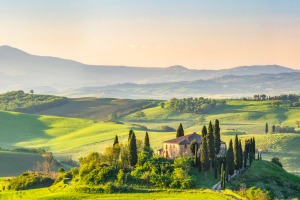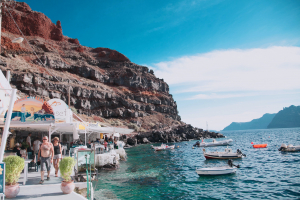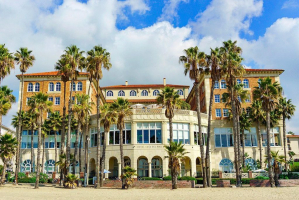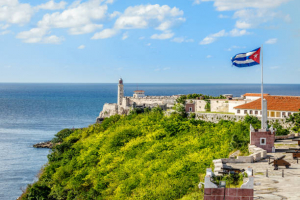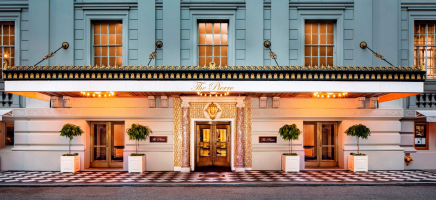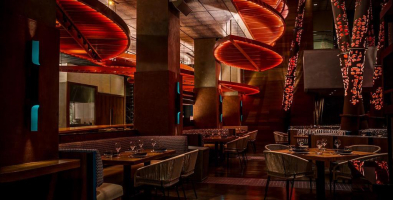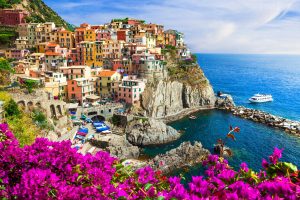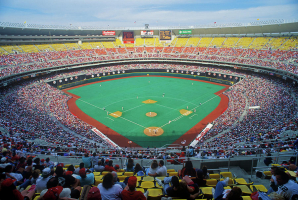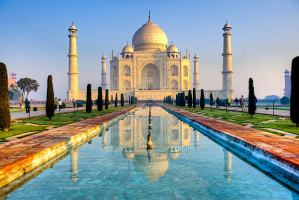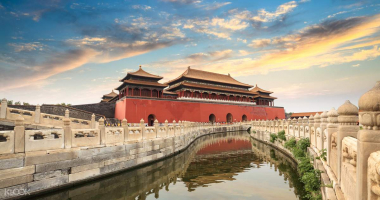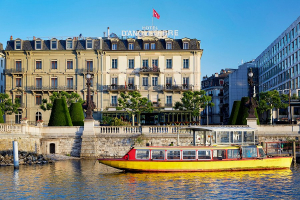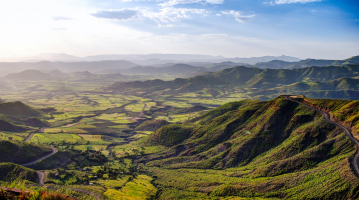Top 15 The Most Romantic Places in Paris
Paris encourages us to be free, the light of spirit, and carefree. Venice, Rome, or New York all lay claim to be romantic, but Paris has its unique aura ... read more...because the City of Light is also the City of Love. Whether it's lounging on the grass outside Parc Montsouris, purring sweet nothings under the Eiffel Tower, or embracing in front of "The Wall of I Love You," Paris is the ultimate place of the heart, as you'll find in our selection of the most romantic places in Paris.
-
From its great height of 324 meters, Eiffel has seen couples kissing far down on the grass of the majestic gardens of the Champ de Mars for more than a century. The Eiffel Tower has witnessed numerous marriage proposals, first kisses, and vows of love, making it a must-see for any in-love pair. The Eiffel Tower sparkles with lights and offers even more beautiful charms every nightfall. Of course, Gustave Eiffel's beautiful invention is most renowned for its one-of-a-kind architecture. This design reflects the entire identity of Paris across the world and gives a breathtaking 360° panorama of the city from the top.
The Eiffel Tower stands on four lattice-girder piers that taper inward and join to form a single large vertical tower. As they curve inward, the piers connect by networks of girders at two levels that afford to view platforms for tourists. By contrast, the four semicircular arches at the tower's base are purely aesthetic elements that serve no structural function. The glass-cage machines designed by the Otis Elevator Company of the United States became one of the principal features of the building, helping establish it as one of the world's premier tourist attractions.
One option is to take a step back from the crowds and appreciate the tower from afar, maybe across the Seine in the Trocadero Gardens. There's more peace at the edge of the Champ de Mars, near the Paris Military School. The Wall for Peace, at the end of the gardens, is a stunning contemporary work of sculptural art with the word "Peace" engraved in 32 languages and a fantastic view of the Eiffel Tower.
Address: Champ de Mars, 5 Av. Anatole France, 75007 Paris, France
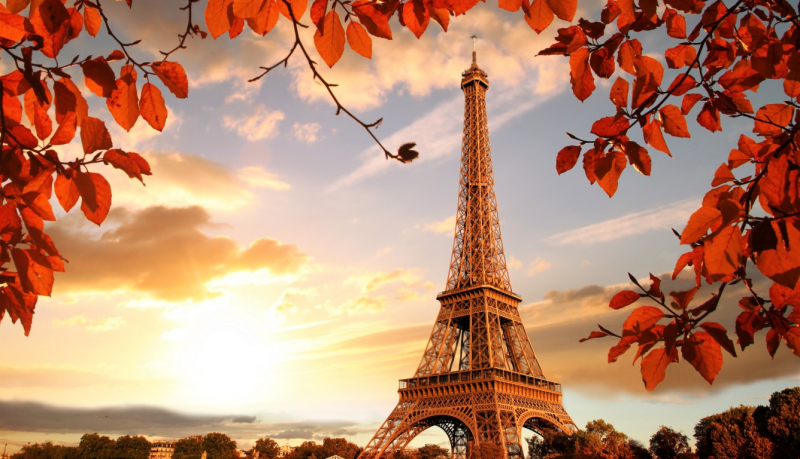
The Eiffel Tower 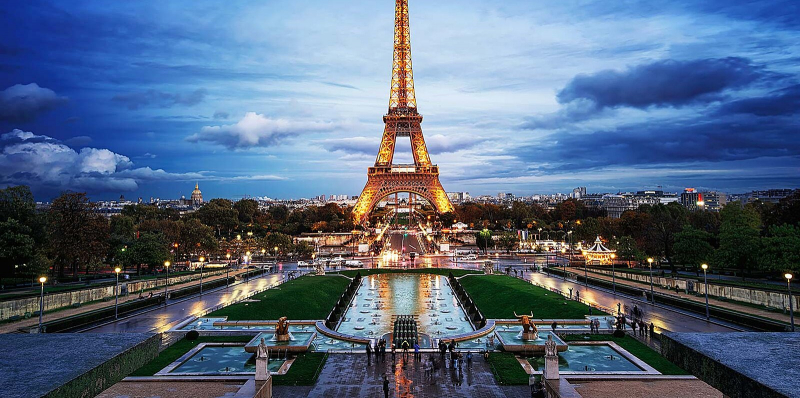
The Eiffel Tower -
The Seine River, which runs through the heart of Paris, is the beating heart of the dynamic French metropolis. The tranquil river is an essential aspect of the city's unique history. The river, which is lined with traditional bookstores and surrounded by magnificent boulevards, old cafés, and picturesque neighborhoods, is a draw in and of itself. Walking along the Seine's banks is a great way to know the City of Light. Along the route, you'll pass by several gorgeous and ancient bridges, as well as some of Paris' most renowned structures and landmarks, such as the Louvre Museum, the Eiffel Tower, and the Cathedral of Notre Dame.
The two banks of the Seine refer to as La Rive Gauche (the Left Bank) and a La Rive Droite (the Right Bank). Both banks are listed as UNESCO World Heritage Sites, and they each offer their distinct flavor of the Parisian experience. The Left Bank link to writers, artists, and café culture. The likes of Hemingway, Picasso, and Matisse all once called the La Rive Gauche their home, and today it's the perfect place to get lost on foot and watch Parisian life pass by. Grab an old-fashioned hot chocolate at Le Deux Magots, stroll through the Latin Quarter's meandering passageways, or peruse the modest book shop set up beside the river.
Whereas the Left Bank connects to the arts, philosophy and other intellectual pursuits, the Right Bank of the Seine has always had stronger links with commerce and trade. La Rive Droite was historically the more affluent side of the Seine. However, this is no longer true. This side of the Seine also lays claim to many of Paris' most notable attractions, including the Louvre Museum and Arc de Triomphe.
Connecting the Left and Right banks with the Ile de la Cité, Pont Neuf is the oldest bridge across the Seine. Built under the instruction of King Henry III, it opened in 1607 and is distinguished by its striking stone arches. The next is Pont Alexandre III, completed in 1900, which many consider as the most beautiful and extravagant bridge in Paris. The beaux-arts bridge is famous for its ornate lamps and gilded sculptures at each end. It was named after Tsar Alexander III to celebrate Franco-Russian relations. Finally, Pont des Arts were perhaps better known as the "Love-Lock Bridge," a pedestrian pathway connecting the Left Bank to the Louvre Museum on the Right Bank.
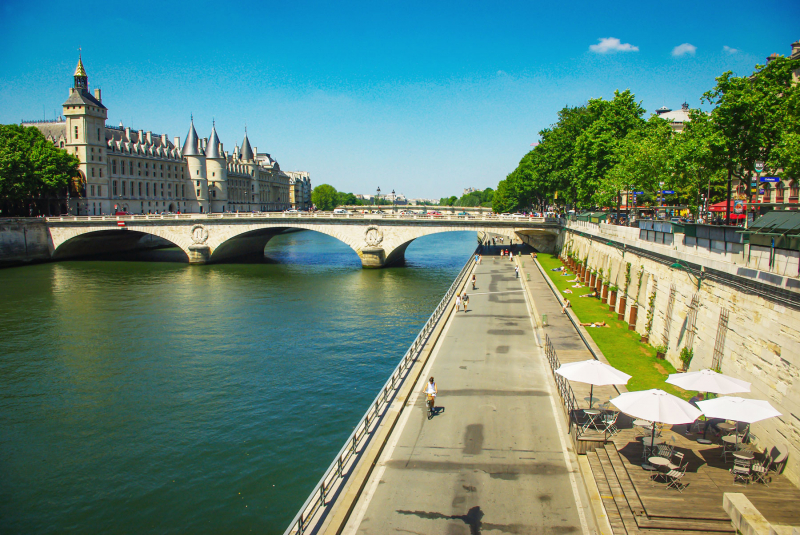
The banks of the Seine 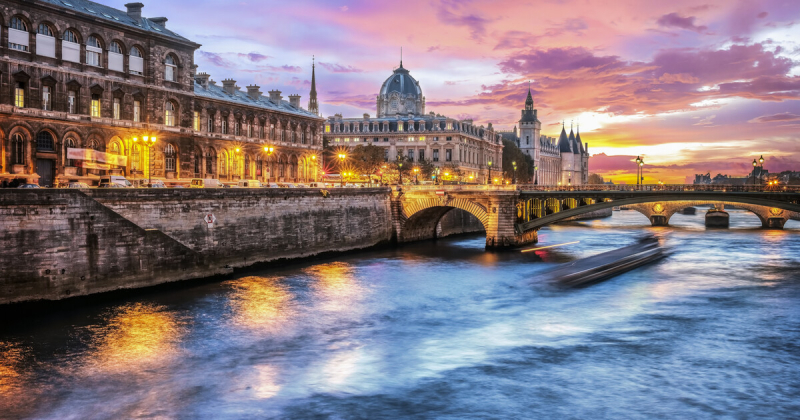
The banks of the Seine -
There is so much more to visiting the Montmartre area in the 18th arrondissement when traveling to Paris. But we can not ignore the Sacre Coeur Basilica. It is a well-known landmark and the city's second most visited monument.
Sacré-Cœur Basilica is a Roman Catholic church and minor Basilica dedicated to the Sacred Heart of Jesus in Paris, France, located at the top of the butte Montmartre, the city's highest point. The building began in 1875 and was finished in 1914. It is regarded as a political and cultural monument, reflecting a national penance for France's defeat in the Franco-Prussian War of 1870 and the activities of the Paris Commune of 1871. Sacré-Cœur Basilica was built in a neighborhood that witnessed significant events by the Paris Commune of 1871. It is a well-known landmark and the city's second most visited monument.
The Archbishop of Paris, Cardinal Guibert, sanctioned the construction of this church, and Montmarte hill was chosen as the best location. Cardinal Guibert got permission to use the property for the new church in 1873. The architect chosen was Paul Abadie, and the Romano-Byzantine architecture was influenced by sites like Venice's Saint Marks Church and stood in stark contrast to the medieval design of Gothic cathedrals like Paris' Notre Dame. The stone used to construct the Basilica was called travertine stone, and it was mined in the Seine-et-Marne district of Ile de France. Travertine stone produces calcite, so the Basilica has that distinctive white appearance.Address: 35 Rue du Chevalier de la Barre, 75018 Paris, France
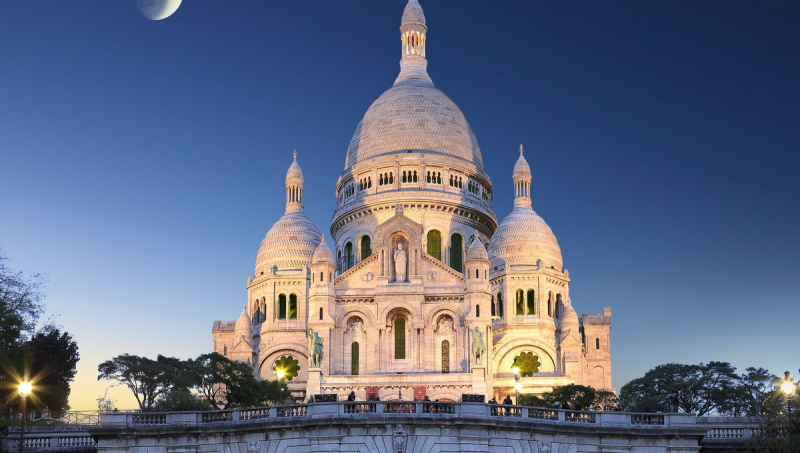
Sacré-Cœur Basilica 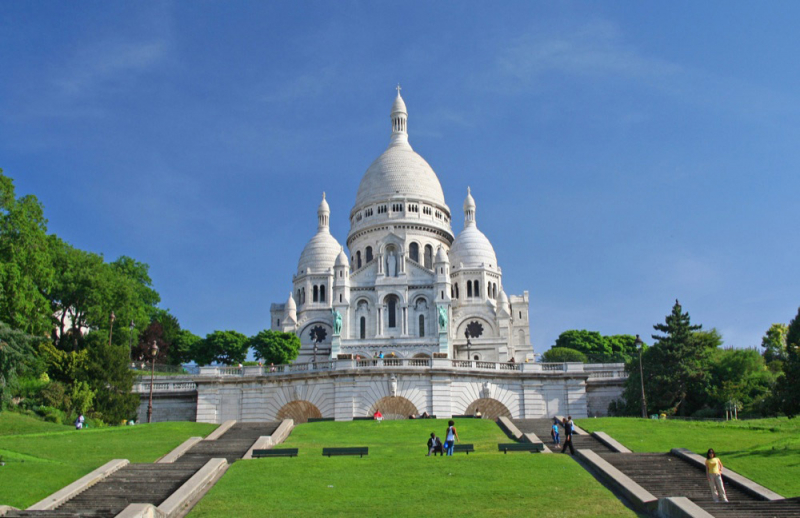
Sacré-Cœur Basilica -
Created during the reign of Napoleon III, the Parc Montsouris was designed as an English garden with green spaces and a lake. Still, there are also many bronze and stone statues to discover, along with wildlife, the bandstand, and the Theatre de Guignol du Parc Montsouris.
In the Parc Montsouris, you can enjoy the shade from around 1400 trees, and one Ginkgo Biloba named the Tree of Forty Crowns is the giant tree on the lake. And yes it has a lovely large lake with an island in the middle that is home to numerous species of birds and other wildlife, including mallards, swans, nuthatches, and even turtles, making this a tranquil spot in the heart of the city.
However, there are also areas to sit on benches or play games, and you can wander through the different regions over bridges, discover intimate corners, elevated viewpoints, ramps, and waterfalls. It also joins the green belt and wild area of a former railway line where the old tracks are hidden in ravines surrounded by trees, making this a haven for wildlife.
In addition to these points, the Parc Montsouris park is home to the meteorological observatory of Montsouris, called the Observatoire Meteorologique de Montsouris, and a stone obelisk that stands approximately 5 meters high that is a marker of the meridian of Paris. A bandstand is often home to different musical events and concerts during the summer months. That's the reason why Parc Montsouris becomes one of the most romantic places in Paris.
Address: 2 Rue Gazan, 75014 Paris, France
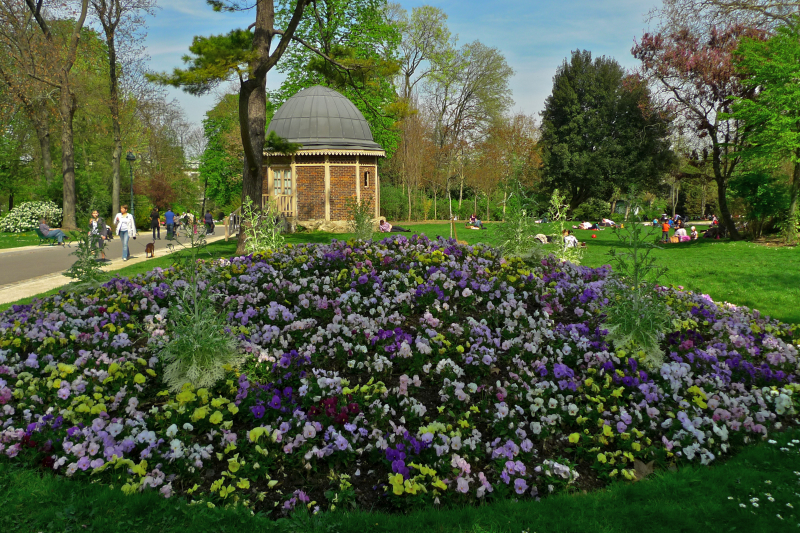
Parc Montsouris 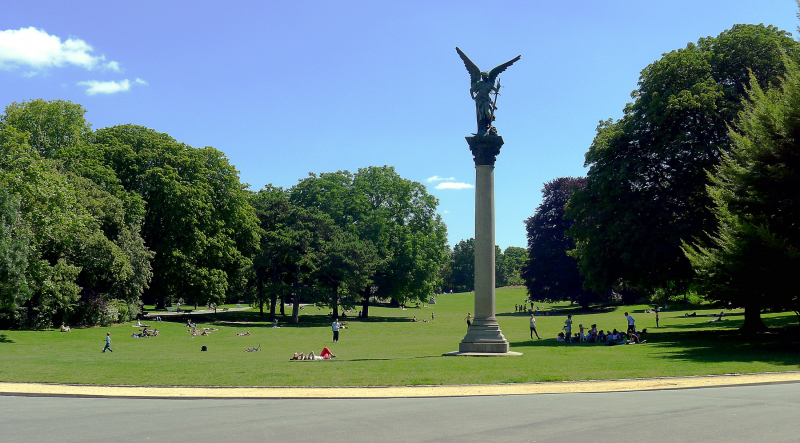
Parc Montsouris -
This plaza in Paris is located on the Ile de la Cite near Paris's oldest bridge, the Pont Neuf, and is one of the gardens by the Place Pont Neuf and the Place Dauphine, both named for King Henri IV.
The Square du Vert Galant is roughly 1,600 meters squared and was designated as an Ecological Green Space in 2007. With so much flora and wildlife, it's easy to see why it's become a famous tourist destination in Paris for a romantic stroll. You will be able to enjoy a wide variety of tree species such as yew, chestnut, maple, black walnut with edible nuts, weeping willows, Ginkgo Biloba, and Bohemian olive trees that produce soft olive oil.
Being near the Western extremity of the Ile de la Cite, you may sit on a seat and enjoy the spectacular views over the Seine to destinations like the Hotel de la Monnaie and the Musee du Louvre. There are also various animal species to see, such as swans, ducks, coots, wagtails, and others. Because of the peaceful atmosphere in the park, Square du Vert Galant has become a popular place to date for many couples visiting Paris.
Address: 15 Pl. du Pont Neuf, 75001 Paris, France
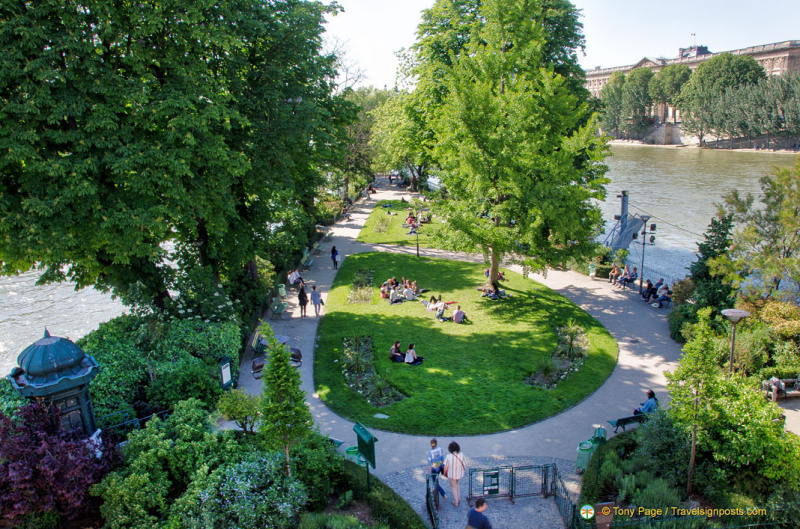
Square du Vert Galant 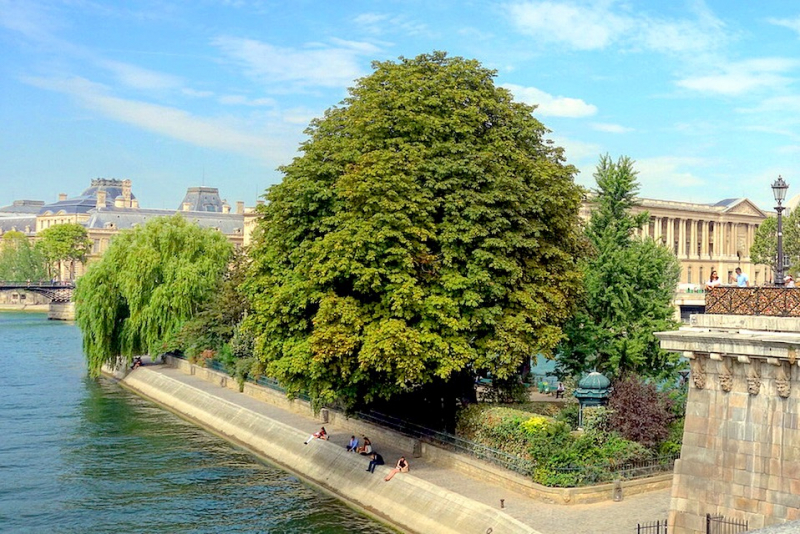
Square du Vert Galant -
The Place Dauphine is a historical square in Paris named after the son of King Henri IV, which is located on the Ile de la Cite and was constructed while the Place des the Vosges was being built and after the Pont Neuf Bridge had been built over the River Seine.
Officially known as Le Square de la Place Dauphine, this square in Paris opens on one side of the Palace of Justice, which is flanked by staircases and statues of lions, whereas on the other side is the equestrian statue of Henri IV. It is shaded by numerous chestnut trees that were first introduced into parks and gardens in Paris during the 17th century and is a lovely space for a stroll by the Square du Vert Galant and where the Pon Neuf bridge intersects the Ile de la Cite.
This park and square are almost 2,600 meters squared and open every day of the year, with lots of benches to rest and relax on. It is also accessible to the disabled and wheelchair users. There are also several restaurants in Paris with grand terraces nearby, and Place Dauphine is a lovely area to enjoy watching the boats travel up and down the River Seine or playing a game of petanque, commonly known as french boules.
Address: 75001 Paris, France
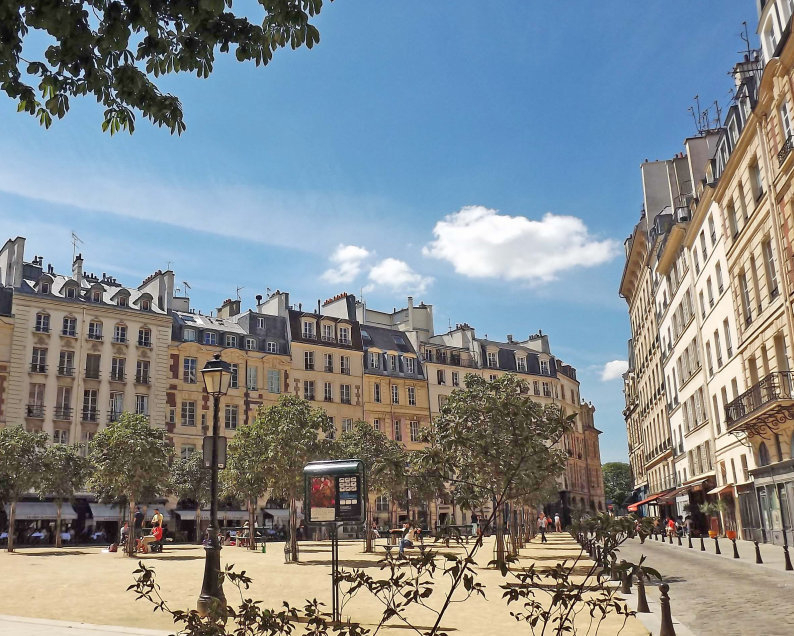
The Place Dauphine 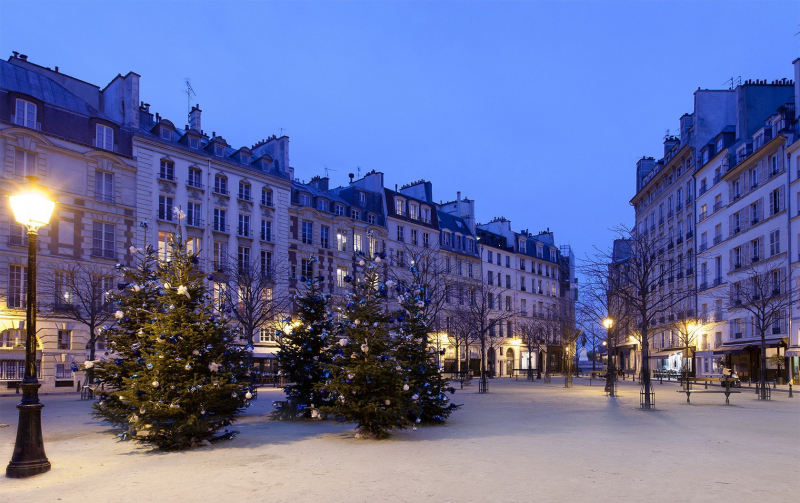
The Place Dauphine -
Louvre Museum, official name Great Louvre or French Grand Louvre, national museum and art gallery of France, housed in part of a large palace in Paris built on the right-bank site of the 12th-century fortress of Philip Augustus. The Louvre is the world's most beautiful and most significant museum. It houses one of the most impressive art collections, attracting art lovers worldwide. You'll be fascinated by the baroque-style museum and palace— LeMusée du Louvre in French, situated along the banks of the calm Seine River.
If you and your partner are art lovers, the Lourve will be a perfect place for you to discover the artwork in the Louvre museum. The museum first opened its doors in 1793 and featured 35,000 works of art. Here you can get close to various artists from different periods and cultures. The Louvre features everything from Egyptian mummy tombs to ancient Grecian sculptures. Masterpieces such as "Liberty of Leading the People" by Eugene Delacroix, "The Raft of Medusa" by Théodore Géricault, and Leonardo da Vinci's "Mona Lisa," the museum's biggest star, can be found here. With such a robust art collection, the Louvre has earned the title of the most visited museum in the world.
The museum is open Mondays, Thursdays, and weekends from 9 a.m. to 6 p.m., and on Wednesdays and Fridays from 9 a.m. to 9:45 p.m. The Louvre is closed on Tuesdays. Admission costs 15 euros ($16.80) for adults and is free for visitors 17 years old and younger. It is the most touristy place, but you should come here in the evening when it's silent and calm, find a cosy corner and sketch a portrait of your lover. That's such a romantic activity to do in Paris.
Address: Rue de Rivoli, 75001 Paris, France
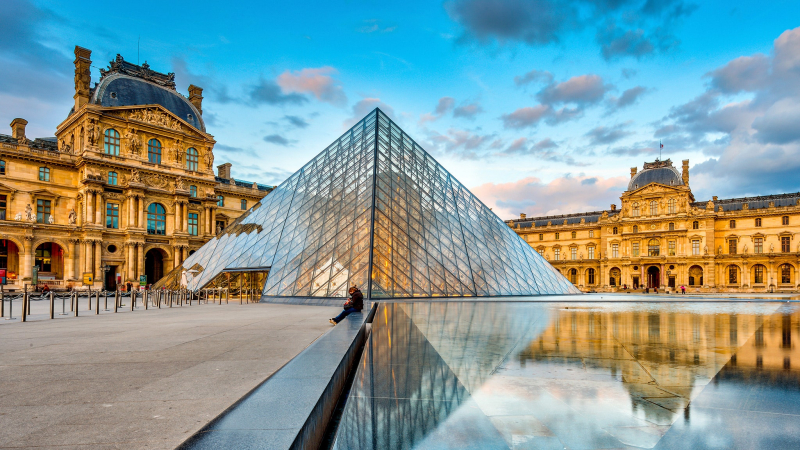
The Louvre 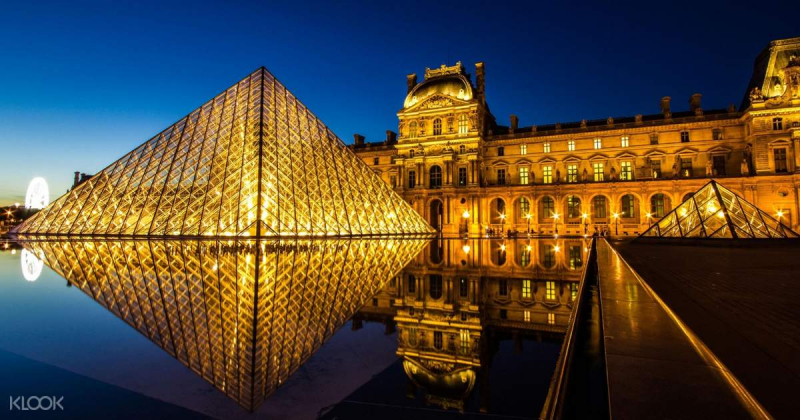
The Louvre -
Discover one of Paris' unique spots and visit the Wall of Love. As one of the most romantic cities globally, it should come as no surprise that there's a natural attraction dedicated to love. Whether you're looking for the Instagram backdrop or a cute date spot with your other half, this art installation has been visited by all the Parisian and globe-traveled lovers of the world and remains a popular attraction. Known as Les Mur des Je t'Aime in French, the sweet sight attracted many tourists and the couples that always seem to go to this place.
The story behind this wall is pretty impressive, as two artists called Frederic Baron and Claire Kito designed it. Covered in 312 different ways to say 'I love you in numerous languages, Baron went door to door, asking embassies, neighbors, and strangers to tell the most romantic words in every tongue. He wasn't alone either, as a poet named Jean-Claude de Feugas helped him collect the phrases. All 192 of the nations represented by the United Nations are there, which is a huge accomplishment.
Unsurprisingly, the Wall of Love has been the site of many romantic occasions, including proposals, engagement photoshoots. From Afrikaans to Korean to Tamil, it's a real testament to the universality of emotion and human connection. With several benches dotted around the area, it's worth grabbing a seat and spending a good twenty minutes letting the weight of the world's love sink in and let the words roll off your tongue.
Address: Square Jehan Rictus, Pl. des Abbesses, 75018 Paris, France

The Wall of Love 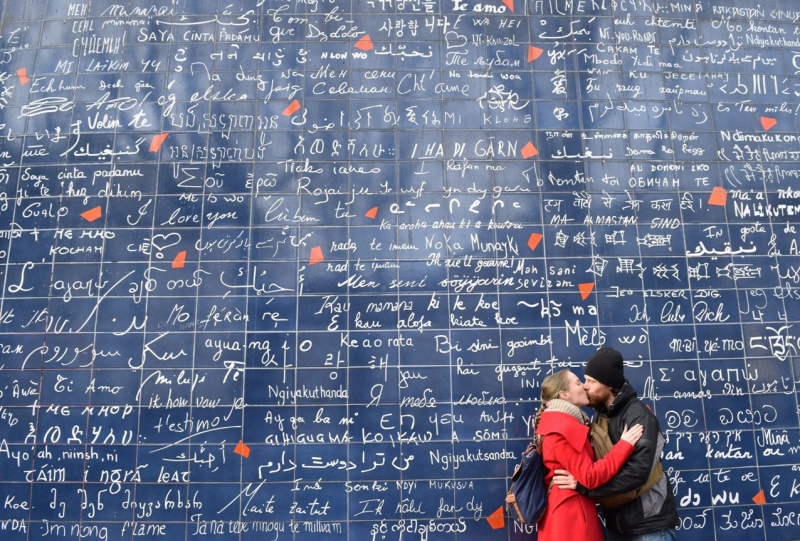
The Wall of Love -
Montmartre is a district full of authentic charm, and La Butte Montmartre is the highest top of the capital. It is famous for the Sacré-Coeur basilica and its magnificent view of Paris. In some other words, we should say the hangout place for Bohemians and street entertainers offering background music or a juggling show. The passers-by are always delighted to walk through that festive atmosphere.
Indeed before its grand entrance, you have wide and great stairs built on a slope from which you have an incredible view of Paris, and a part of that slope is covered by lawn so you and your partner can sit on. To access the top, you have to climb the 222 steps leading up through the Louise Michel public garden. Otherwise, you have a funicular railway that will bring you to the place. A mild spell is, of course, the best moment to go to that place so you can enjoy a picnic or flick through a magazine.
After visiting the basilica, you enjoy strolling around this historical area: Place du Tertre and its famous caricaturists, the Espace Dalí, the Montmartre grapevines, the cabaret du Lapin Agile, the Musée Montmartre. The walk continues down to the world-famous Moulin Rouge cabaret. On the way, there is plenty to interest visitors: arty and trendy shop windows in rue des Abbesses and rue Tardieu, shops in rue Lepic, the cosmopolitan rue de Steinkerque, the saucy Pigalle district, and Montmartre cemetery. A few minutes' walk from the Moulin Rouge, in SoPi (South Pigalle), the tea room in the garden of the Musée de la Vie Romantique is a delightful place to stop for refreshments.
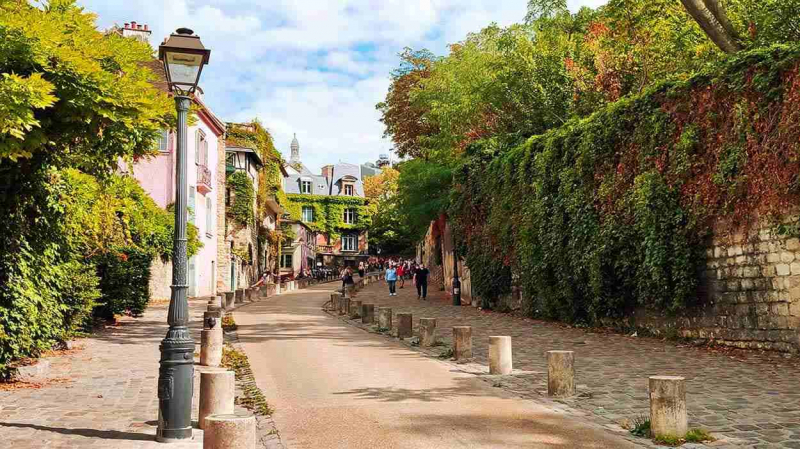
The Butte Montmartre 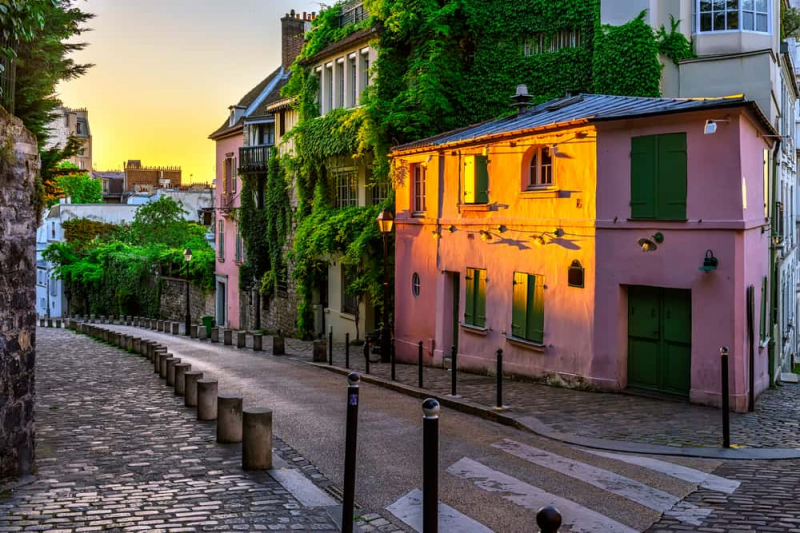
The Butte Montmartre -
It was built between 1163 and 1245 on the Île de la Cité. Dedicated to the Virgin Mary, Notre-Dame de Paris is one of the oldest Gothic Cathedrals globally and one of the best-known. Its towers offer incredible views over Paris. The authorities renovated and restored the cathedral buildings several times during the last eight centuries. The most significant renovation took place in 1845 and took twenty-five years to complete. During this restoration, they replaced flying buttresses, restored the chapel, and added a new rose window.
The cathedral has two towers standing 226 ft (69 meters) tall on its façade. Visitors can climb to the top and, apart from the magnificent views of Paris, you can visit the bell tower, where the Hunchback of Notre Dame lived, and see the cathedral's multiple gargoyles. The access to climb the cathedral's two towers stay in the North Tower (rue du Cloître), and visitors will have to climb 387 steep steps since the cathedral doesn't have an elevator.
Decisive events have taken place in Notre Dame, including the coronation of Napoleón Bonaparte, the beatification of Joan of Arc, and the coronation of Henry VI of England. On the 15th of April 2019, the cathedral suffered a severe fire, causing severe damage to the roof and the needle of the central tower. Due to this fire, the Notre Dame Cathedral is closed to the public until reconstruction work is completed. It is not possible to visit the cathedral, nor the square nearby. Don't worry about it! Because you and your partner can enjoy the magnificent view of the campus and the beautiful old view from the other side.
Address: 6 Parvis Notre-Dame - Pl. Jean-Paul II, 75004 Paris, France
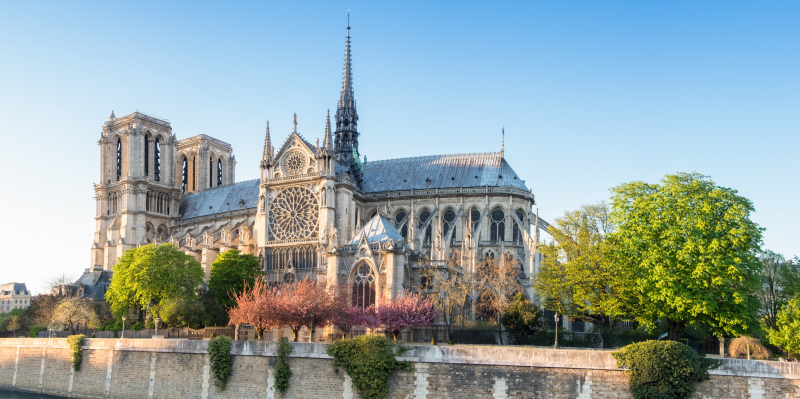
Notre Dame Cathedral 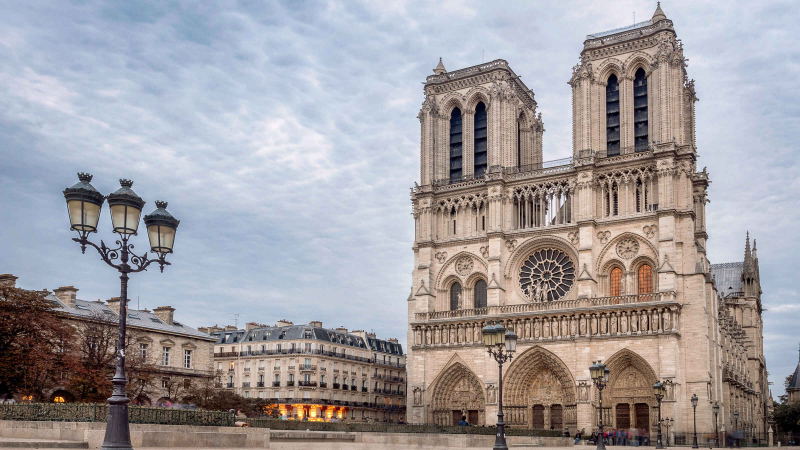
Notre Dame Cathedral -
Palace of Versailles, former French royal residence and center of government, is now a national landmark. As the center of the French court, Versailles was one of the grandest theatres of European absolutism.
Perhaps the most famous room in the palace is the Hall of Mirrors (1678–89). The gallery extends over 230 feet (70 meters) and is characterized by 17 wide arcaded mirrors opposite 17 windows overlooking the gardens below. Glass chandeliers adorn the arched, ornately painted ceiling. Gilded statues and reliefs border its marble walls. The hall is flanked on opposite ends by the equally striking Salon of Peace and Salon of War.
The gardens of Versailles were planned by André Le Nôtre, perhaps the most famous and influential landscape architect in French History. Behind the palace, the ground falls away on every side from a terrace adorned with ornamental basins, statues, and bronze groups. Directly west of the deck is the Latona Fountain, designed by Le Nôtre and sculpted by Gaspard and Balthazard Marsy. To the south of the terrace, raised flower beds lead to a pair of staircases that flank the Orangerie, a grove planned by Hardouin-Mansart in 1685 that includes more than 1,000 trees. Palm, pomegranate, lemon, and orange are among the varieties represented, with tropical and subtropical species being moved indoors during the winter months.
UNESCO designated the palace and its gardens a World Heritage site in 1979. The Palace of Versailles is the most romantic place you and your partner can enjoy the incredible view, and 60,000 artworks, collections of Versailles illustrate five centuries of French History.Address: Place d'Armes, 78000 Versailles, France
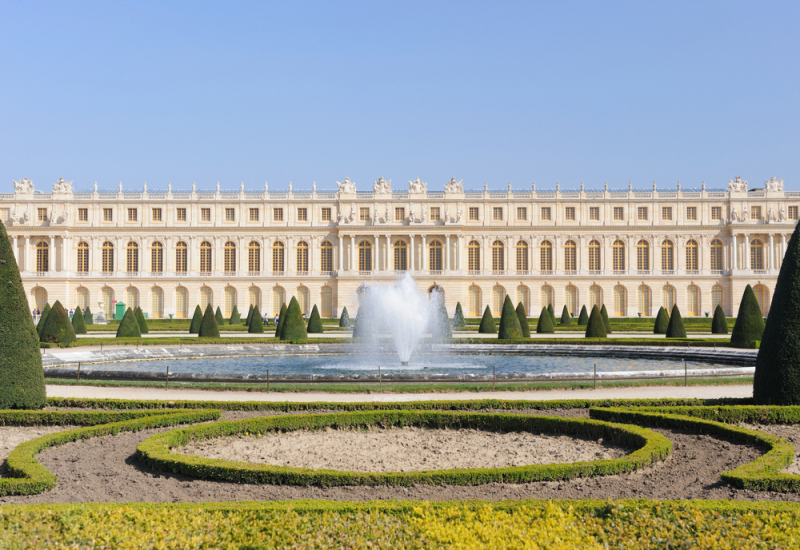
Palace of Versailles 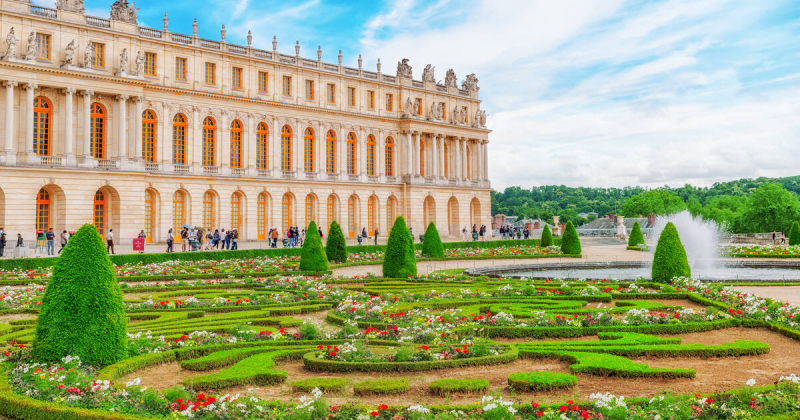
Palace of Versailles -
The Arc de Triomphe of the Place de l'Etoile is one of the most famous monuments in Paris. It is situated at the center of the Place Charles de Gaulle (initially Place de l'Étoile), at the beginning of the Champs-Élysées. The Arc de Triomphe honors those who fought and died for France during the French Revolution and the Napoleonic Wars, with all French victories and generals inscribed on its inner and outer surfaces. Under its vault lies the Tomb of the Unknown Soldier from the First World War.
Jean Chalgrin designed the monument in 1806 on the orders of Napoleon and inaugurated it in 1836 for the sixth anniversary of the Three Glorious. Fifty meters high, 45 meters wide, and 22 meters deep, it was the largest triumphal arch in the world before the construction of the one in Pyongyang in 1982. The Roman Arch of Titus inspired its design. The observation deck at 50m up the Arc de Triomphe has some of the best views in Paris. At the summit of 234 steps, you can see for miles and take in the spectacular panoramas of La Défense, the Champs Elysées, and up to the Sacré Coeur. At sunset, you can see Paris fall under the cloak of night and illuminate under the street lamps at dusk, a truly romantic experience.
Arc de Triomphe is standing at the western end of the Champs-Elysees at the center of Place Charles de Gaulle. Champ- Elysees, the road that leads to Arc de Triomphe, is one of the most famous streets in Paris. The tree-lined street is best for a night romantic stroll with your partner. There are many restaurants, shops, and theatres along the road where you can hang out after the walk.
Address: Pl. Charles de Gaulle, 75008 Paris, France
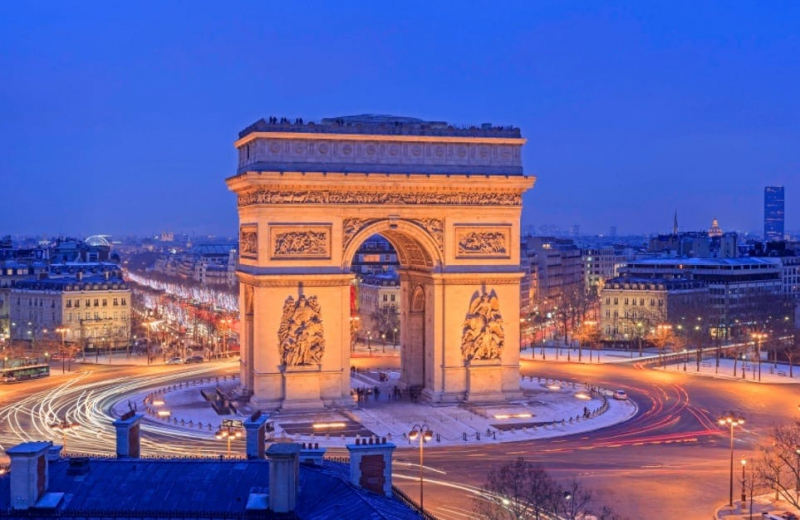
Arc de Triomphe 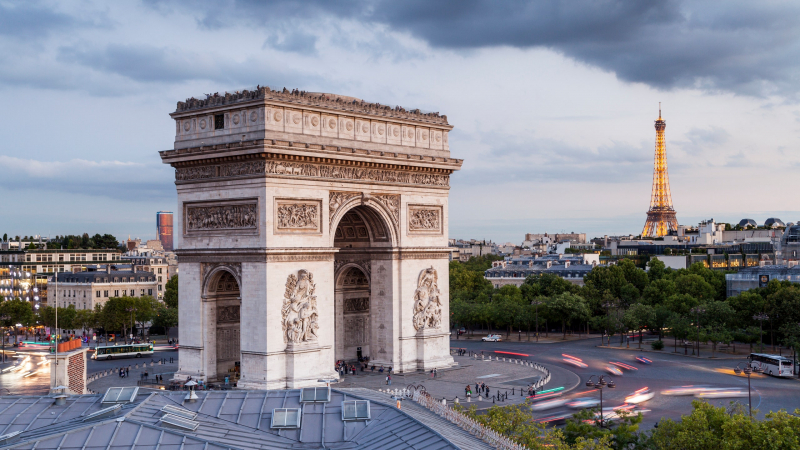
Arc de Triomphe -
The Pont de l'Archeveche translates to the Archbishop's bridge and connects the Ile de la Cite island, yet it has become more well known as the Lovers Bridge over the River Seine, where people attach padlocks to its railings. Construction of this new bridge in Paris was to go from the left bank of the River Seine over to the Ile de la Cite island close to where the fabulous Notre Dame Cathedral still stands today and where the palace once stood before being demolished the end of the 1800s.
They replaced the parapet over the years with stronger and safer ones. Yet, the Pont de l'Archeveche is still only 11 meters in total width, with a path on each side of 2 meters, so this makes it the narrowest road bridge over the River Seine in Paris. A craze started in Paris, and this is the romantic gesture of attaching a padlock to specific places so that couples can declare their love for each other.
The activity first started on the Pont des Arts bridge in Paris, referred to as the Bridge of Love. However, the authorities removed the love locks in 2010, and people then started to attach the padlocks to the railings of the Pont de l'Archeveche instead. That's why Pont de l'Archeveche became the Lovers Bridge, but both of these bridges have so full of padlocks by tourists who wish to declare love to each other.
Address: Pont de l'Archevêché, 75004 Paris, France
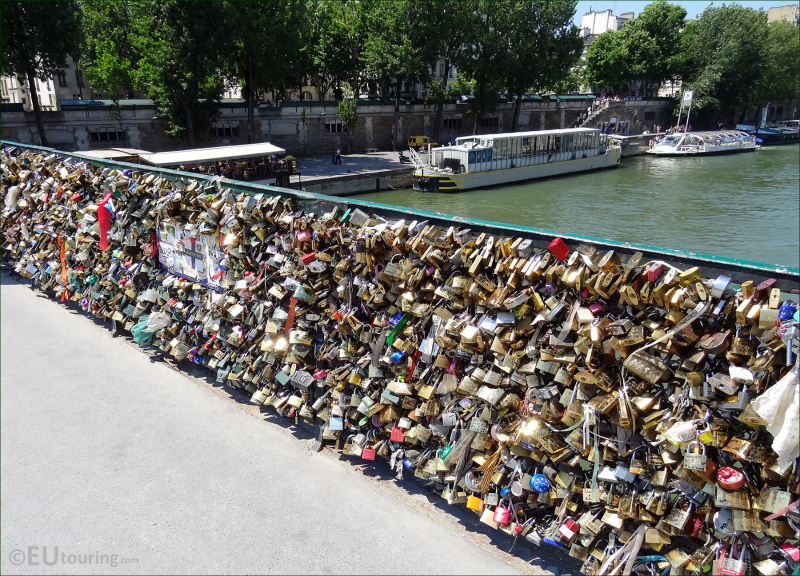
Pont de l'Archeveche 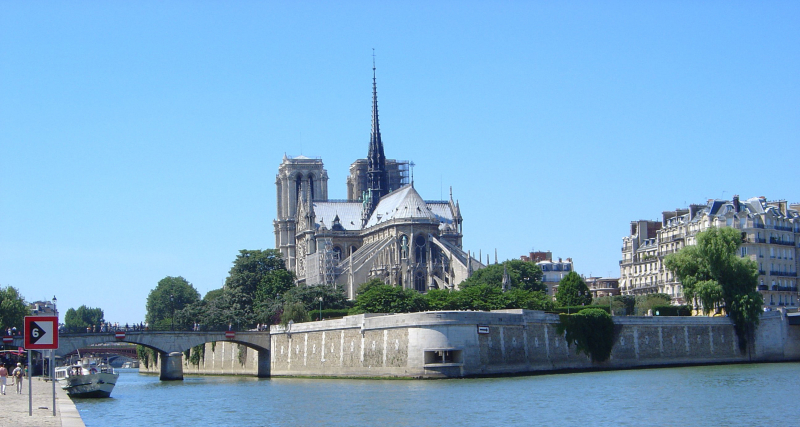
Pont de l'Archeveche -
Pont des Arts have an international reputation as the bridge of romance. It was the first metal bridge built in the city and connects the Quai de Conti at the Institut de France with the Quai des Tuileries, where the Louvre Museum is situated.
The first metal bridge in Paris was built early in the 19th century, on the site now occupied by the modern Pont des Arts.
Elegant and lightweight, this represented the cutting edge of engineering in its day, being made of cast iron. Inspired by the world’s first cast-iron bridge, built across the River Severn in England, Napoleon Bonaparte asked engineers to design a bridge that would resemble a garden suspended over the Seine, adorned with flowers and furnished with benches on which pedestrians could rest.The Pont des Arts is a firm favorite of artists and photographers who draw inspiration from its magnificent views along the river. It is also a popular picnic spot and, of course, a significant attraction for lovers from all over the world who would gather in this most romantic of locations and carry out a curious but much-loved tradition; attaching love locks to the bridge.
The tradition originated in Hungary; lovers would attach padlocks engraved with their names to the sides of the bridge before throwing the key in the river as a symbol of eternal devotion. It was a charming idea, but sadly in practice, it led to the considerable accumulated weight of the locks damaging the bridge. Thus the authorities decided in 2015 to have all the love locks removed from the bridge. Nonetheless, the Pont des Arts and the nearby Pont de l’Archevêché remain iconic locations for a romantic tryst in Paris and perfect places to enjoy a cozy picnic for two.
Address: Pont des Arts, 75006 Paris, France
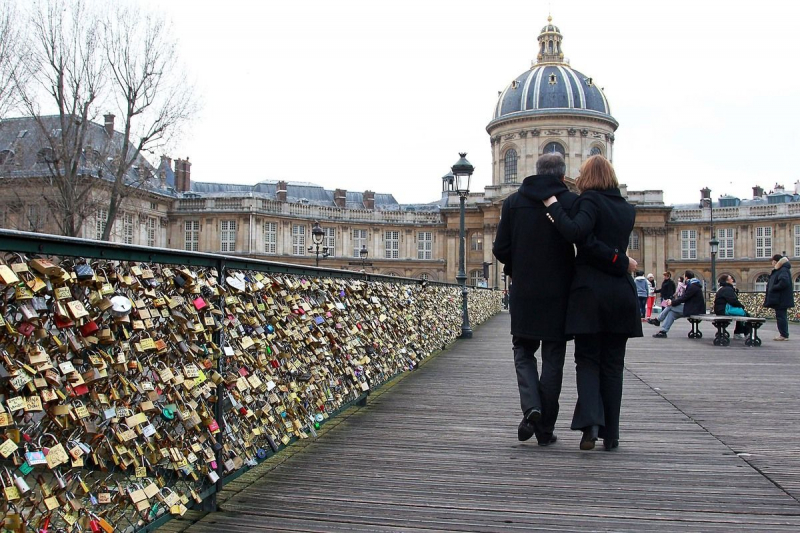
Pont des Arts 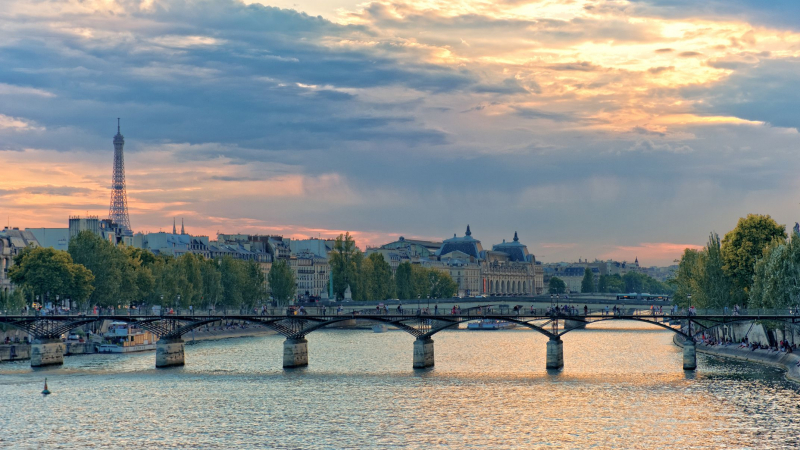
Pont des Arts -
The Musee de la Vie Romantique, the Museum of Romantic Life, is located in the home of painter Ary Scheffer (1795-1858). It is situated where once stood ancient religious buildings dedicated to St. Lazare. In 1792, this area became the property of the State and was turned into a vast park.
In 1820, this park was divided into separate lots, where they built mansions with gardens, Scheffer's house being one of them. Scheffer built the house in 1830, to which he added two studios and a fountain. The house became a museum in 1983, dedicated to art and literature between 1820-1860.
The Museum of Romantic Life presents a diverse collection of paintings, drawings, sculptures, furniture, ceramics, and art objects. It is divided into two sections, and the first floor is dedicated to Georges Sand; the second floor contains works of Ary Scheffer and other artists of his time.
The Rose Bakery tearoom stays on the grounds of the Hotel Scheffer-Renan at 16 Rue Chaptal, open from Tuesday to Sunday. You can enjoy several kinds of delicacy cake accompanied by a refreshing cup of lovely tea. We are sure that it is the perfect romantic destination for you and your lover to hang out when visiting Paris.
Address: 16 rue Chaptal, Paris, France
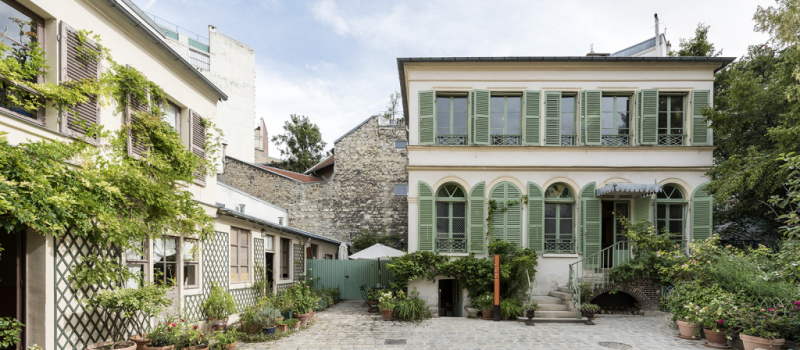
Museum of Romantic Life 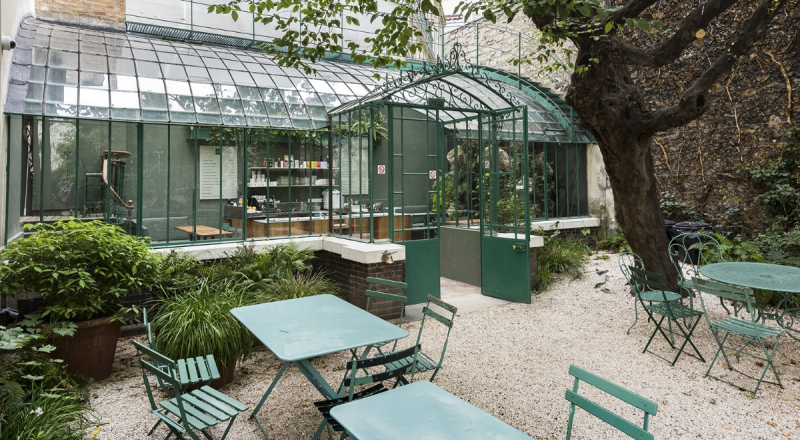
Museum of Romantic Life

















